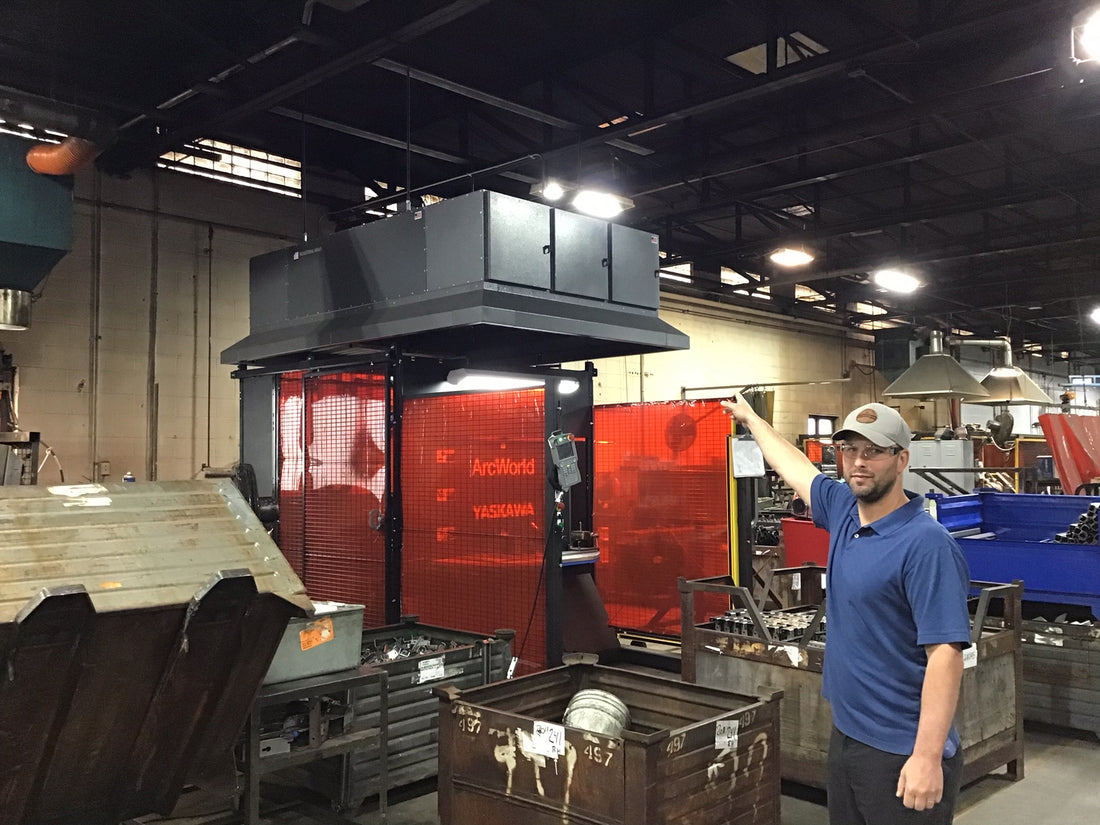A Growing Demand
A lack of skilled welding labor and the continued improvements in robotic welding and automated welding processes is forcing the purchase of robotic welder cells to skyrocket.
Demands for welders are high, but both the welding and utility industries are failing to attract prospective job candidates. This is in large due to skilled labor falling out of standard curricula of many schools and a diminishing focus on the importance of trade schools. The current average age of a welder is 55 and above, and with many workers almost at retirement age, it’s estimated there will be a shortage of welding talent in numbers as staggering as 400,000 by 2024, according to the American Welding Society.
While these numbers are staggering, manufacturing continues to grow faster than the rest of the U.S. economy, forcing many machine shops, welding shops and manufacturing operations to increase spend on robotic welders and automated welding processes to bridge the gap on the shortage of talent.
The Robotic Welder Risks
While the addition of robotic welding and automated welding cells to the industrial fabrication markets is solving a challenge many machine shops and welding shops are facing, we are seeing a growing concern with air quality, smoke and particulate collection, safe operation of dust collection equipment and the rising incidents of fires and application failures in the workplace. It is more difficult to collect welding smoke and fume from these high deposition applications that many times include rust inhibitors on the base metals, nozzle dip, and anti-spatter use in the welding process. However, ensuring a proper welding ventilation system is an important piece of your industrial air cleaner solutions, especially in machine shops and welding shops.
An Economical Solution
Industrial Maid has developed an RH Series of packaged industrial air filtration system built to fit today’s needs on robotic welding and automated welding cells. Quiet, cost-effective, safe and the industrial air filter media is designed for welding smoke removal—including oily welding smoke and fumes.
A thermal switch is an effective way to control the fire concerns along with an intake area that is much larger lower air velocities. This system design takes the ducting out of the equation. The build-up of material in the ducting is what causes most dust collector fires. One hot spark dropped into a dirty duct consumed by airflow is the perfect formula to start a fire in any machine shop, welding shop or manufacturing operation.
Industrial Maid products are built in Nebraska by a hard-working dedicated staff with over 100 combined years of experience in the welding industry, these welding ventilation hoods are turning heads and making maintenance managers and welding supervisors’ lives much easier. The goal of providing a safe, efficient and smoke-free welding environment is attainable with Industrial Maid. Learn more about our Robotic Welder and Automated Welding Hoods and eliminate welding smoke and fumes in your shop for good.
View all Industrial Maid Welding hoods or learn more about the advantages and disadvantages of Robotic Welding and Automated Welding Processes.




